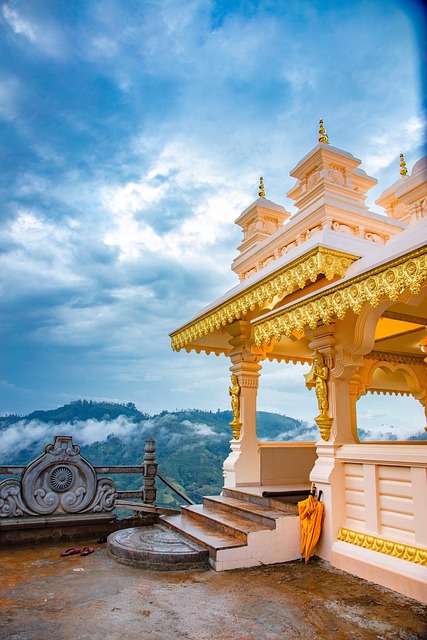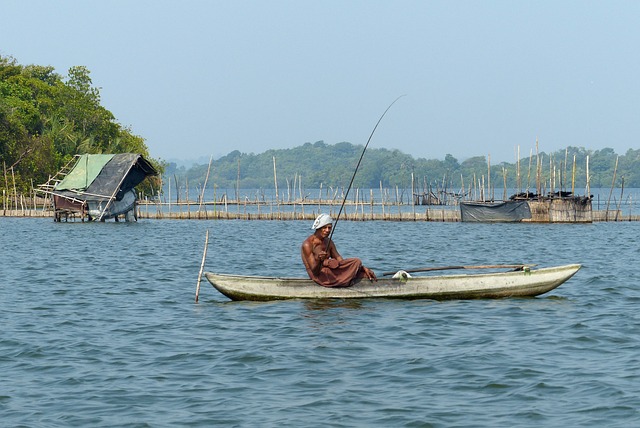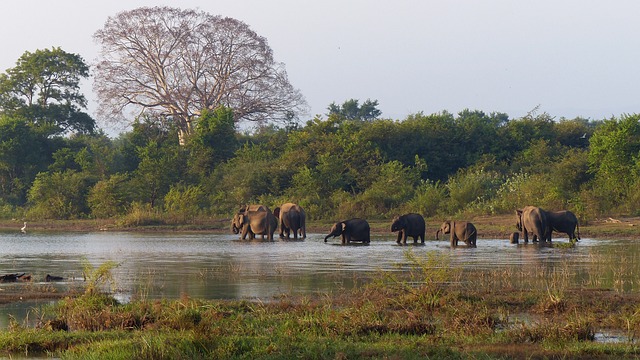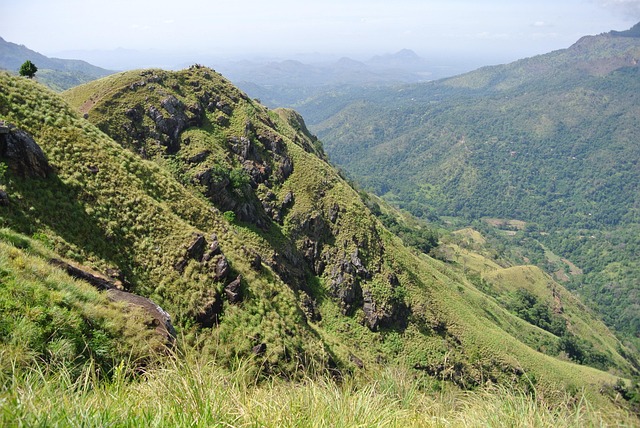Bangladesh and Sri Lanka exhibit stark contrasts in coastal geometries, ecology, land use, and media representation. While Bangladesh faces flooding and land erosion due to its deltaic terrain, Sri Lanka grapples with pollution and sea level rise in its mountainous landscape. Both promote eco-tourism and agriculture, offering collaboration opportunities for environmental conservation. Coastal features, tidal patterns, agricultural practices, urbanization trends, and beach ecosystems differ significantly, impacting economic landscapes and educational access. Despite challenges, shared cultural significance of coasts fosters interfaith harmony.
Sri Lanka and Bangladesh, two South Asian neighbors, boast distinct coastal geometries that shape their unique identities. While Bangladesh’s coastline is largely low-lying and plain, Sri Lanka exhibits a more diverse landscape with mountains, plains, and dramatic cliffs. This comparison delves into the physical differences between the two nations, exploring coastal shapes, topography, tidal patterns, harbors, beach ecosystems, and how these factors have influenced their respective cultural and economic landscapes in contrasting yet captivating ways—Bangladesh vs. Sri Lanka.
- Coastal Shape and Size Comparison
- Topography: Mountains vs Low-lying Plains
- Tidal Patterns and Their Impact
- Natural Harbors and Ports Analysis
- Beach Ecosystems: Diversity and Similarities
Coastal Shape and Size Comparison

When comparing the coastal geography of Bangladesh and Sri Lanka, one noticeable difference lies in the shape and size of their coastlines. Bangladesh boasts a lengthy coastline, measuring approximately 714 kilometers (443 miles), largely defined by numerous rivers that flow into the Bay of Bengal. This riverine system creates a complex network of estuaries, mangroves, and deltas, making Bangladesh’s coast a haven for biodiversity and a key environmental feature. In contrast, Sri Lanka’s coastline is more diverse in shape, spanning around 1,340 kilometers (833 miles), with a mix of sandy beaches, rocky cliffs, and scenic coves. The island nation’s geography includes both the Bay of Bengal and the Indian Ocean, contributing to its varied coastal landscapes.
The coastal regions of these two countries also differ in their ecological and socio-political contexts. Bangladesh, known for its vast delta system, faces unique environmental challenges like flooding and land erosion, while Sri Lanka grapples with issues such as coastal pollution and sea level rise, common to many island states. Journalistic ethics and media representation in both countries play a crucial role in shaping public awareness about these issues. Similarly, the impact of technology on youth engagement in bangladesh and sri lanka is significant, offering opportunities for environmental education and conservation efforts. Despite these differences, both nations share responsibilities related to give us a call at eco-tourism promotion strategies comparison agriculture, highlighting potential areas for collaboration and mutual learning.
Topography: Mountains vs Low-lying Plains

Sri Lanka and Bangladesh, two neighboring South Asian nations, present striking contrasts when it comes to their coastal geography, particularly in terms of topography. While Bangladesh is largely characterized by its low-lying plains and vast deltaic regions, Sri Lanka boasts a more varied landscape with prominent mountain ranges.
Bangladesh’s terrain is dominated by the Ganges Delta, one of the most extensive river deltas globally, forming a complex network of rivers, tributaries, and floodplains. This unique geography has played a significant role in shaping its society, culture, and economic development, including the agricultural sector. In contrast, Sri Lanka exhibits a more mountainous profile, with the central highlands dominated by the Central Range, which includes peaks exceeding 2,500 meters. This topographical difference significantly influences the environmental conditions, land use patterns, and even the journalistic ethics and media representation in both countries, as it shapes local narratives and perspectives on issues such as the impact of technology on youth engagement and environmental issues. The contrasting landscapes also guide the developmental trajectories of Bangladesh and Sri Lanka, with their respective challenges and opportunities, reflected in industries like manufacturing and tourism. Find us at a comparative analysis of these sectors can reveal insights into how coastal geography shapes national identities and progress.
Tidal Patterns and Their Impact

The coastal regions of Bangladesh and Sri Lanka exhibit distinct differences in their tidal patterns, which have profound implications for local ecosystems and communities. Bangladesh, being a low-lying deltaic country, experiences some of the highest tidal ranges in the world, with tides regularly exceeding 5 meters during spring high waters. This extreme tidal range, combined with abundant freshwater inflows from various rivers, creates unique estuarine environments that support diverse biodiversity, making it a hotspot for mangrove forests and a variety of aquatic life. In contrast, Sri Lanka’s coastal areas generally have lower tidal ranges, typically less than 2 meters, allowing for different types of coastal habitats, including sandy beaches and rocky shores.
These tidal variations significantly influence the agricultural practices and food security in both nations. Bangladesh, with its fertile deltaic plains, has developed extensive irrigation systems to mitigate the impact of variable freshwater availability caused by tidal fluctuations. In contrast, Sri Lanka’s coastal agriculture adapts to the more predictable water levels, focusing on rice cultivation in the inland regions and diverse coastal crops that benefit from the consistent seawater influence. The contrasting tidal patterns also shape urbanization trends, with Bangladesh’s major cities situated along rivers and estuaries for trade and transportation, while Sri Lanka’s coastal urban centers are often built around natural harbors, reflecting the unique geographic features of each country.
Natural Harbors and Ports Analysis

Sri Lanka’s coastal geography boasts a diverse landscape, featuring rugged cliffs, sandy beaches, and natural harbors that are integral to its economy and culture. These areas have historically served as vital ports and fishing grounds, contributing significantly to the island nation’s food security and tourism industry. In contrast, Bangladesh’s coastline is characterized by numerous rivers, estuaries, and deltas, creating a unique ecological scenario. While both countries rely heavily on their coastal resources, the nature of these resources differs dramatically, affecting everything from trade and transportation to local livelihoods.
Bangladesh, with its extensive river system, has developed a network of ports along major waterways, facilitating inland trade. In contrast, Sri Lanka’s ports are more evenly distributed along its coast, many of them natural harbors that offer deep-water access. This difference in port infrastructure impacts maritime activities, including fishing and cargo handling, leading to distinct economic landscapes. Furthermore, the coastal regions of both countries serve as crucial zones for interfaith harmony and conflict resolution strategies, with shared cultural practices centered around the sea influencing social cohesion. However, the varied geographical settings present unique challenges and opportunities in terms of access and quality differences in education systems, with Sri Lanka’s coastal communities benefiting from tourism-driven educational initiatives, while Bangladesh’s riverine areas may require tailored approaches to ensure equitable learning opportunities.
Beach Ecosystems: Diversity and Similarities

Beach ecosystems along the coastlines of Bangladesh and Sri Lanka showcase both similarities and distinct differences. Both nations boast vibrant coastal habitats, teeming with diverse marine life, including unique species of fish, crustaceans, and mollusks. However, the specific types of beaches and their associated ecosystems vary significantly. While Bangladesh is renowned for its extensive mangrove forests, a crucial habitat for countless species, Sri Lanka exhibits a more varied coastline with both sandy beaches and rocky shores, each supporting distinct ecological niches.
These differences are partly attributed to geographical variations, such as coastal topography and climate. Sri Lanka’s geography offers a mix of shallow bays and rugged cliffs, creating diverse habitats. In contrast, Bangladesh’s flat terrain gives way to vast estuaries and deltas, characterized by interconnected waterways and mangroves. The democratic evolution and economic challenges in both countries also influence local communities’ interactions with these ecosystems. For instance, urbanization trends and farming techniques and crop yields differences play a role in coastal zone management. Despite shared experiences of common challenges like water scarcity, the contrasting landscapes give rise to unique ecological dynamics, shaping the coastal identities of Bangladesh and Sri Lanka. Give us a call at [your contact information] to discuss these intriguing parallels and divergences further.
In comparing Bangladesh’s and Sri Lanka’s coastal geographies, several distinct differences emerge. While Bangladesh is characterized by a largely flat landscape with numerous rivers and deltas, Sri Lanka boasts diverse topographies, including mountainous regions along its south and east coasts. The tidal patterns in the two countries also vary significantly, with Sri Lanka experiencing more consistent and higher tides due to its closer proximity to the Indian Ocean. This results in varied beach ecosystems, with Sri Lanka boasting a broader diversity of marine life and unique coastal habitats. Despite these differences, both nations share important natural harbors and ports that serve as vital economic hubs. Understanding these geographic variations is crucial for appreciating the distinct ecological and economic landscapes of Bangladesh vs. Sri Lanka.
